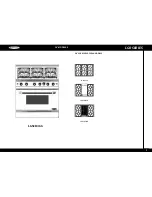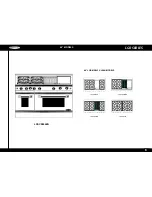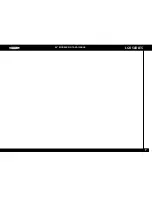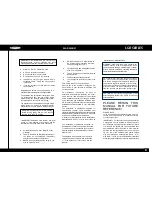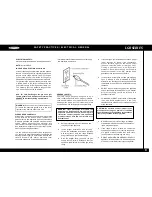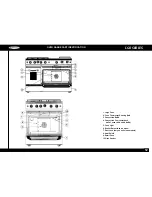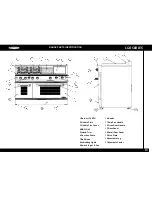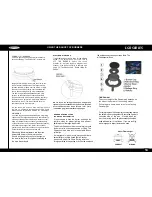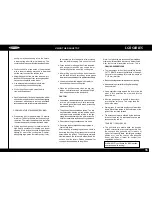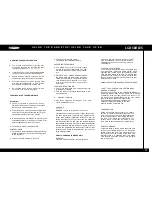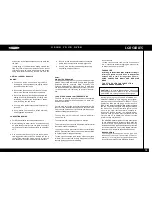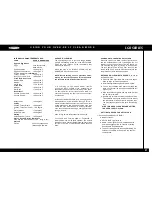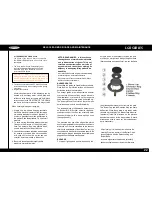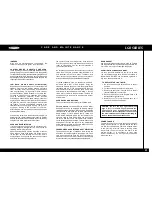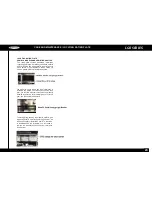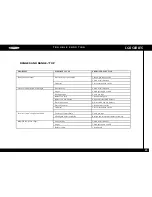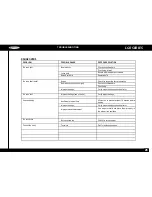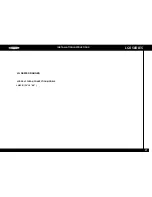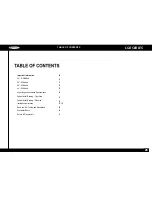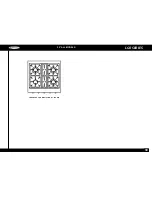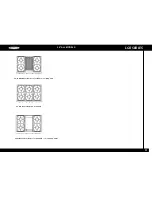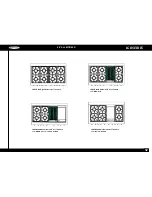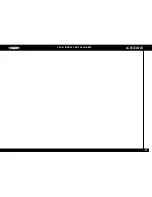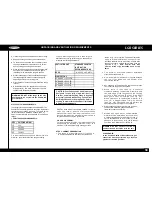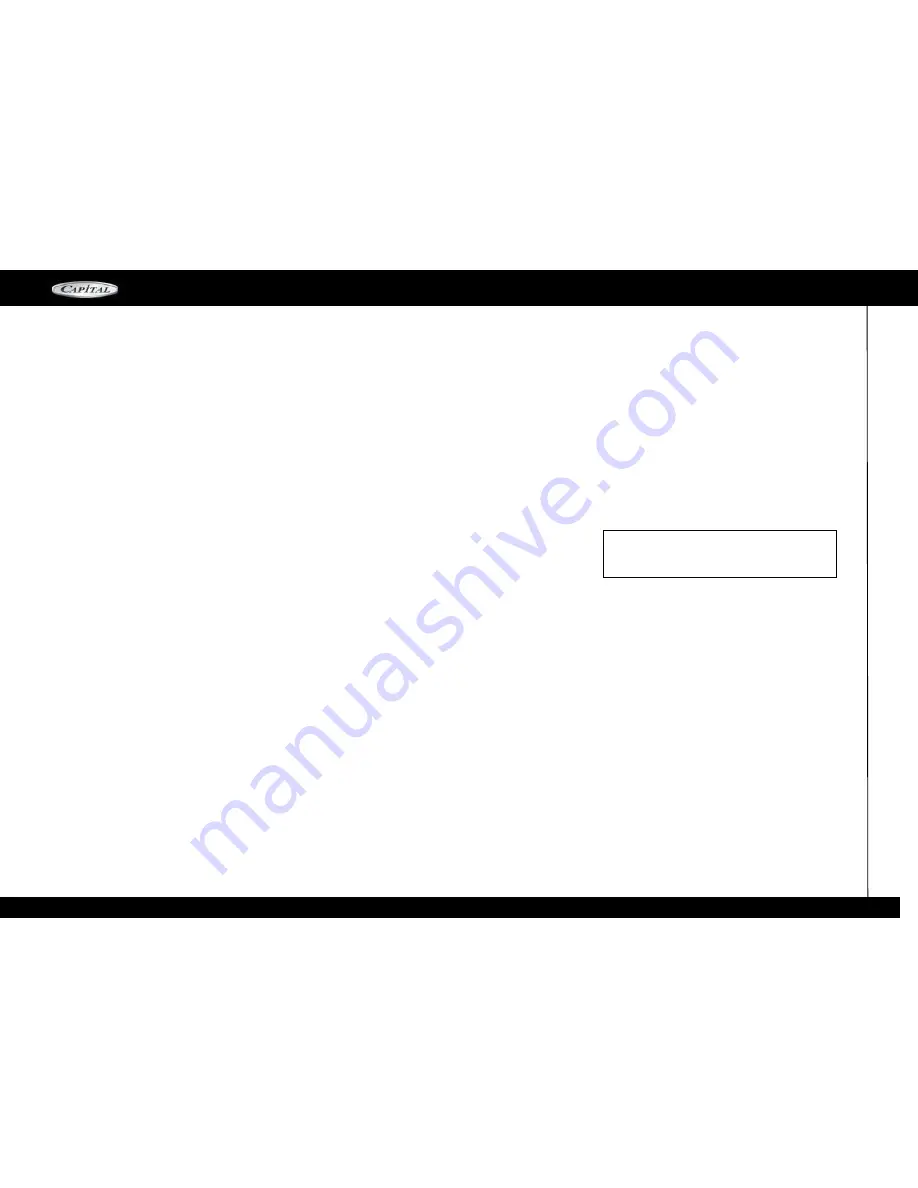
at least one inch of space between the oven walls and
the pans.
If using large or commercial size baking utensils, the
food may take a few extra minutes as the air cannot
circulate as freely as it does with a smaller pan. When
using commercial size baking utensils, use only one
GETTING THE BEST RESULTS
BAKING:
Follow the recipe amount and ingredients,
including the size and shape of the baking utensil
recommended in the recipe.
Do not open the oven door "just to peek," use the
interior oven light and look through the window.
Do not use the oven for storage, especially when
baking in the oven. Extra utensils, not being used
for baking, can affect the food product, baking
time, browning, and end result.
If you are using glass utensils, lower the tempera-
ture 25°F.
Use a minute timer and set it for the minimum
time suggested in the recipe.
CONVECTION BAKING
Follow the first three recommendations above.
Metal utensils give better results, in convection, than
do glass baking utensils. If you use glass, it usually is
not necessary to lower the temperature an additional
25°F.
Use a minute timer and set it for less than minimum
time suggested in the recipe. The first time you use a
recipe in the convection mode, be sure to note the
new baking time on your recipe for future reference.
19
U S I N G
Y O U R
O V E N
Notes:
HIGH ALTITUDE BAKING
Recipes and baking times vary if you are baking at high
altitude. For accurate information, write to the. Agriculture
Extension
Service.
Colorado
State
University, Fort
Collins, Colorado 80521. Specify the type of information
and the baking mode (convention bake or bake) you need,
i.e. cakes, breads, etc. There may be a cost for the bulle-
tins.
TO USE THE OVEN ON LOW TEMPERATURE
The oven can be used to keep hot food hot, to dehydrate
food, to warm plates, for slow cooking (as in a crock pot),
and to defrost foods.
You can keep hot, cooked food at serving temperature. Set
the oven to the temperature suggested in the chart. Rare
meat must be eaten when it is removed from the oven, as
continues cooking from its own heat.
To keep food moist, it must be covered with alumi-
num foil or a lid.
To dehydrate food, follow suggestions in a recipe.
To warm plates, check with the dishware manufacturer for
the recommended temperatures.
To use the oven as a low cooker set the oven control knob
to 255°F. Place the food in the oven in a pan with a tight fitting
lid. Follow recipes for this type of cooking.
To thaw uncooked frozen food, set the oven control knob
to "warm". Be sure the food is tightly wrapped in foil. Thaw
the food just enough. Cook immediately.
Do not refreeze.
To thaw frozen cooked food, set the oven knob to
170°F. Loosen the freezer wrapping. Do not use plas-
tic wrap or wax paper in the oven.
FOOD SAFETY
According to the United States Department of Agri-
culture you should not hold foods at temperatures
between 40°F to 140°F for longer than 2 hours.
USING
CONVECTION
BROIL
AND
REGULAR
BROIL.
TO SET THE OVEN FOR CONVECTION
BROIL AND REGULAR BROIL
CAUTION:
Pay special attention when setting the
Oven Control Knob on "BROIL". If you set the knob
past the "BROIL" setting, the burner will not ignite.
Decide if you are going to use REGULAR BROIL or
CONVECTION BROIL. If you are going to use regular
broil turn the Oven Control knob To "BROIL". To use
Convection Broil turn the Oven Control Knob to
"BROIL" and press the CONVECTION button to operate
the fan. The burner will ignite after the gas reaches
the burner. The "oven on" indicator light will come
on to let you know that the broiler is currently on.
During the broiling process, the infra-red burner
produces such an intense heat that the burner will
cycle on and off to maintain an efficient yet safe
interior cooking environment.
The HEATING indicator light on the valve panel cycles
on and off with burner to let the user know when the
burner is lit. This cycling process is used to evenly
distribute and safety control the intense heat that the
broil burner produces. The cycling feature prevents
the burner from producing range-damaging heat.
RACK POSITION
The rack position depends on the type and
thickness of the food. Thick pieces of meat or
poultry (1" or more) would typically be broiled
or convection broiled on rack position
4
. Steaks,
Be sure to read the basic information on convection
before using the oven for the first time, page 14-16.
Keep in mind that convection baking results vary,
depending on type of product.
LGR SERIES
Summary of Contents for LGSCR304
Page 1: ...USE AND CARE INSTALLATION GUIDE GAS SELF CLEAN...
Page 4: ...LGR SERIES 4 30 MODELS LGSCR304 LGSCR304 30 LGR MSELF CLEAN MODELS...
Page 5: ...5 36 MODELSS LGR SERIES LGSCR366 LGSCR364G LGSCR364B LGSCR366 36 LGR MSELF CLEAN MODELS...
Page 7: ...7 60 MODELS NOT AVAILABLE LGR SERIES...
Page 30: ...30 30 ALL MODELS LGR SERIES LGSCR304 FOUR Burners At 17 000 btu...
Page 33: ...33 60 ALL MODELS NOT AVAILABLE LGR SERIES...
Page 35: ...35 CABINET INSTALL DRAWING FRONT VIEW FIG 1A Cabinet Clearances LGR SERIES...
Page 36: ...36 CABINET INSTALL DRAWING SIDE VIEW LGR SERIES...

